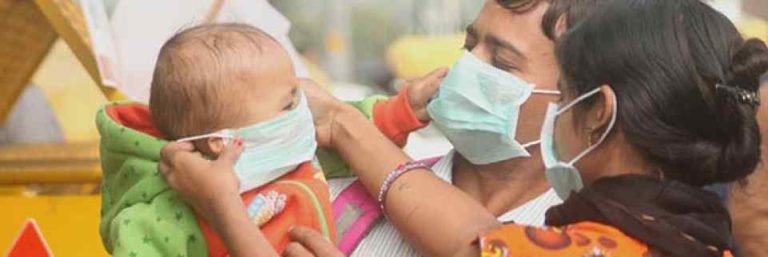The accelerated economic growth experienced by emerging countries, such as India or China, has a high price. At the level of atmospheric pollution, the situation is so serious in both that for years all the alarms have jumped and research is being done to check to what extent the pollution is affecting the health of its inhabitants.
While it is true that China has become the environmental problem of the planet, especially its capital, Beijing, increasingly unbreathable, the fact is that India is not going to lag behind. In this article, we will address the issue of pollution in India and its consequences.
New Delhi, the most polluted
Although China has the most polluted cities, India also presents a terrible pollution and, in fact, its capital, New Delhi, has the most polluted air in the world as a result of a dense smog breaking records in toxicity. In particular, in 2014 it came to be even more harmful than the one breathed in Beijing.
A Shorter Life
In addition, now we have a study that has drawn some shocking conclusions. US scientists have found that pollution in the air in India is reducing an average of three years (3.2, exactly) the lives of 660 million people. Therefore, not only do people who live in cities suffer, but also those who live in rural areas.
In this way, it can be affirmed that more than half of the Indian population is severely affected, regardless of the millions of deaths due to this same cause. And, in general, practically the 1.2 billion inhabitants of the country breathe in environments with harmful levels of pollution, according to the same study.
The new study emphasizes that the origin of the problem is none other than the negligence on the part of the authorities of the country, more focused on industrial growth than on preventing contamination levels from skyrocketing, as has happened in recent years. Not only in New Delhi but nationally, with the catastrophic result that 13 Indian cities are in the top 20 of the most polluted in the world, according to the World Health Organization.
These premature deaths are also the result of typical problems of underdevelopment. While the country is growing at dizzying rates, the social situation remains dramatic for many people, immersed in poverty, without access to basic resources. In particular, using kerosene lamps for lack of electricity is a major source of pollution that reduces the health of people.
Shortening a life means, in many cases, dying as a result of diseases caused by pollution, such as cancers or respiratory problems, and in other cases by complications in people with other diseases or fragile due to having suffered some pathology or simply because of age or malnutrition.
In 2013, NASA created a map where you can see the most polluted places in the world, those where it is more likely to die from this cause, including China, India, Indonesia and Europe.
And in the future, will India improve its situation? Although the country is taking steps in the right direction, expanding its production of green energies, with investments in solar and wind energy, there are still no laws that control the levels of contamination of harmful chemicals such as sulfur dioxide or mercury.

